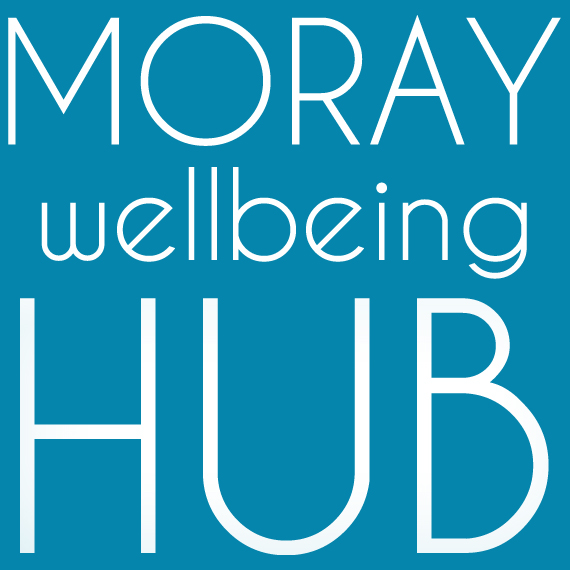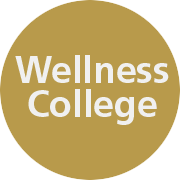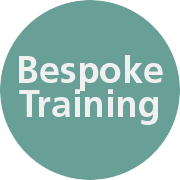“Understood the NHS chain of command! Very useful!”
Scottish Health Council hosted training for our Champions on how to navigate, understand and influence health and social care services. This course ‘Voices Scotland’, was originally developed by Chest Heart and Stroke Scotland. We, the Moray Wellbeing Hub, were keen to see what it could do to help us as community connectors, as people who make use of local services and as professionals that work with and within this system.
The training was delivered by Chris and Gosia from Scottish Health Council over a day at Dunbarney education centre Dr Gray’s, with 10 Champions from a variety of Moray locations and interest groups attending.
It was a lively and informative day that had a great feedback. People shared lots of ideas, experiences and viewpoints in a supportive and engaging space.
“lively discussion”
“It would be helpful to have courses like this to help others”
We learned about the structure of the statutory health services, working effectively together with professionals as patience and community members, and how to take a concern, gather evidence and then report it to create change in an effective way.
Despite there being a few things that need to be updated in the course, it was a great resource for Champions as community connectors and for themselves as empowered patients. We will look at running this again in the future and making available to more people in Moray.
Thank you to Christopher and Gosia for their expertise and for being great facilitators, thanks also to the Champions for using their experiences to help inform discussion and learning.
Thank you also to Champions who shared further reflections in the days after the course:
“Many thanks for today’s workshop. I did learn a lot, I was glad to take part as a person/champion, as it’s very valuable for me to get time to share learning and reflect with a range of people/perspectives but leaving behind my professional role for the day, so I can be myself.”
“Many people do not know their “Rights” or where to access them. We have all experienced situations where we have been ill or needed help with our wellbeing, physical and mental health, and be made to feel inadequate; knowing that the symptoms we are having are not natural, and accused of malingering, which in most cases is not the facts. How do we all find the Balance and avoid the stress that we all go through at some point in our lives?”
“A really good day for me to be learning along with other champions, and feeling more confident that I can take that role on too, with a better understanding of what that means to me and others, and why it’s an important part of change.”
Voices Scotland training for Moray Wellbeing Hub Champions, 2nd November 2017
Report notes and personal reflections
Exercise 1: Looking at the structure of the management of statutory services.
Ultimately, we are the people who are in charge though how we vote – Scottish Parliament is the ultimate top of the decision-making tree and we, therefore, elect those working in this.
Example of confusion regarding how people can influence the system: Christopher made the point that many people were very concerned when stories on the BBC about challenges experienced by junior doctors and the NHS. This had very little relevance in Scotland and caused confusion.
The NHS structure exercise shows that the NHS is complex, but we can influence at different levels (see notes appendix 1). One tip was to also look out with this structure and use tools like Care Opinion which is not part of the NHS but health boards have to help fund this as a process to influence change.
Exercise 2: Working Effectively Together – professionals and patients (notes appendix 2)
Collective advocacy: Christopher let the group know about new legislation – participation requests, (part of the Community Empowerment act) – this means that any group can approach a statutory organisation and ask to be involved, and they must respond and give reasons if the answer is no.
The next exercise looked at working with professionals and the different perspectives. It proved to be both useful in exploring the topic in terms of increasing awareness and sharing viewpoints,
“Community members at meetings have to outperform others at meetings”.
In a discussion about inequalities in meetings as an example, it was discussed the challenge of when people are chatting about holidays or pensions in meetings, they are unaware of how they may trigger others who do not have these ‘common’ experience, perhaps as someone who uses a foodbank.
Exercise 3: Identifying a shared concern (appendix 3)
The group discussed concerns and then voted on shared concerns, selected no 3 improving technology as the topic to work on. This was very interesting as it gained much more votes than the closest issue.
Christopher took us through looking at the issue of people feeling a lack of control of our own patient information and building an evidence case for why we wanted change. He started with looking at why we want the change, our personal experience, and then why we need to do wider research and build our evidence.
We discussed some personal experiences in relation to this, during this it was clear to see the power of us sharing stories of using services, both in widening our knowledge of experiences people have but also in feeling that we had relevant things to contribute. Christopher held this very skilfully and used his own life experiences which really helped seed and being authentically.
Discussion points:
- “If you need access to your own records about your health to self-manage, then you should not be charged to access this”.
- National guidelines used to support the issue might be something like the Patients Charter or the European Convention on Human Rights.
- We also spoke about strategies local and national that could help us. We noted that this should include things like transport and digital inclusion, also neurodiversity inclusion.
- There was a really interesting conversation about social isolation and volunteering to support digital inclusion.
- Discussion about how we could influence and work in partnership with the Scottish Government as they are developing some patent record approaches already.
- We had a passionate discussion about how people get things for free people they may not value things, or how people can end up being shamed into doing things and the poor use of these negative tools to create change – incentivising for action and results.
Next steps:
Christopher will get back to us with more research on the ideas for change that the group developed.
Appendix 1: Notes from influencing NHS and health care at different levels.
NHS Grampian Primary care
- Pharmacy
- Dental
- GP – note they are private contractors working in partnership.
- Health point (can get weight checks here, smoking cessation etc)
- Physiotherapy (now is a self-referral system)
- Podiatry (also self-referral)
NHS Grampian Secondary Care (aka acute care)
- More or less the services you receive when you’re in hospital
- Part of this also comes under Health and Social Care
NHS Tertiary Care: Managed by one of the 14 territorial health boards in Scotland
- Specialist and can be outside of NHS Grampian
Out with NHS Grampian
- Scottish Ambulance Service
- NHS 24
Management above all these levels is as follows
> The Scottish Parliament > The Scottish Government Health and Social Care Directorate
> Integrated Joint Boards
- Integrated Health and Social Care Partnerships
- Local Authorities
- Third Sector
Influencing the system notes:
- Health board: has to have non-elected people on the board, all people regardless of role have the right to vote.
- Integrated Joint Board: same as health board but lay members and third sector members don’t get to vote.
- Community Planning Partnership: Their aim is to look at services in their area and have 5 outcomes they focus on. This group, which includes police, health fire service etc., is part of the integrated partnership but not as formally as previously – now should also be feeding in the health board. The group should have membership from the community and third sector. This is still an area that is developing in how it works with community voice.
Appendix 2: Exercise discussion notes
| Public reps think professionals are…
– They have power over reps – Intimidating – Defensive (can be scared) – Can make a positive change – Are also human beings – Varied – Knowledgeable – Opinionated – Real – Isolated, can be trapped in what they believe in – Afraid of saying the wrong thing (“…could we be sued?”)
|
Professionals think the public are…
– Ignorant – Overwhelmed – Troublemakers – Single issue “they have an axe to grind” – May have good ideas – Scary, challenging – Inexperienced, unprofessional – In need of help – Unpredictable – Interesting – Can save time – free resource – potential teachers – handy when needed to ‘tick the box’, lip services |
| What are the benefits of working together?
– Network, connections – Sharing concerns, less on your shoulders – Learning from others experiences – Mix of people’s skills – Different opinions helps deepen your understanding – More energy to create change – Sharing resources – More powerful voice – More people to ‘get stuff done’ – Raising awareness – Better communications – Removing personal barriers |
What are the barriers of working together?
– Lack of trust – Slowing down decision-making process – Lack of commitment – Different Agendas – ‘Professionals are not always professional’ – judgement, lack of awareness – being labelled – cost – lack of confidence – feeling uncomfortable, intimidated – jargon and acronyms – expenses |
Appendix 3: Shared Concerns
- Waiting for referrals
- More flexible, responsive services & patient centred
- Improving technologies: shared database that could be accessible to patents/app
- Lack of staff / specialists / funding / barriers to volunteering
- Inequalities
Appendix 4: various tips
Tips to working with professionals:
- If you don’t know the dress code, ask before you attend if you are concerned.
- Confidence and body language are more important in establishing a good relationship with professionals.
- Try to leave the emotional links to one side. Important to have these at our root but it can prevent working in partnership.
Some of the useful approaches used in the training included
- Using mood cards with faces on to encourage discussion about how people felt about their last interaction with services. Emotional touch point exercises.
Appendix 4: Feedback
| What worked well?
– Useful to understand structure and how to make opinions heard – Knowledgeable facilitators – It was intensive and informative, enjoyed the subject – Lively discussion – great, informative – Understood the NHS chain of command! Very useful! – Group discussion, everyone was heard – We can change things – Restored my faith and passion for being a mental health warrior! |
What needs further work?
– It would be helpful to have courses like this to help others – Room was airless – Can’t concentrate – Idea for making digital Moray Network (not for me alone, but something needing further action exploration) |






